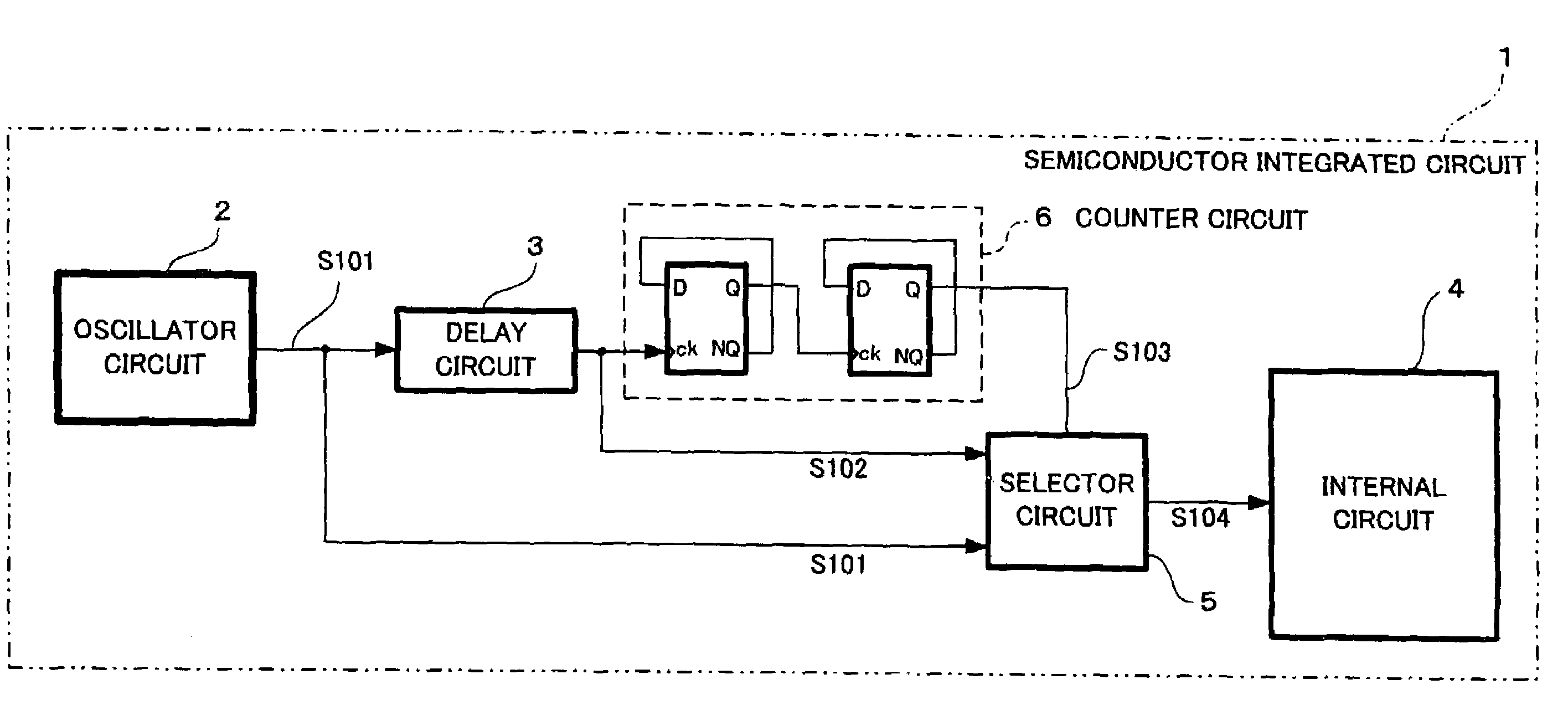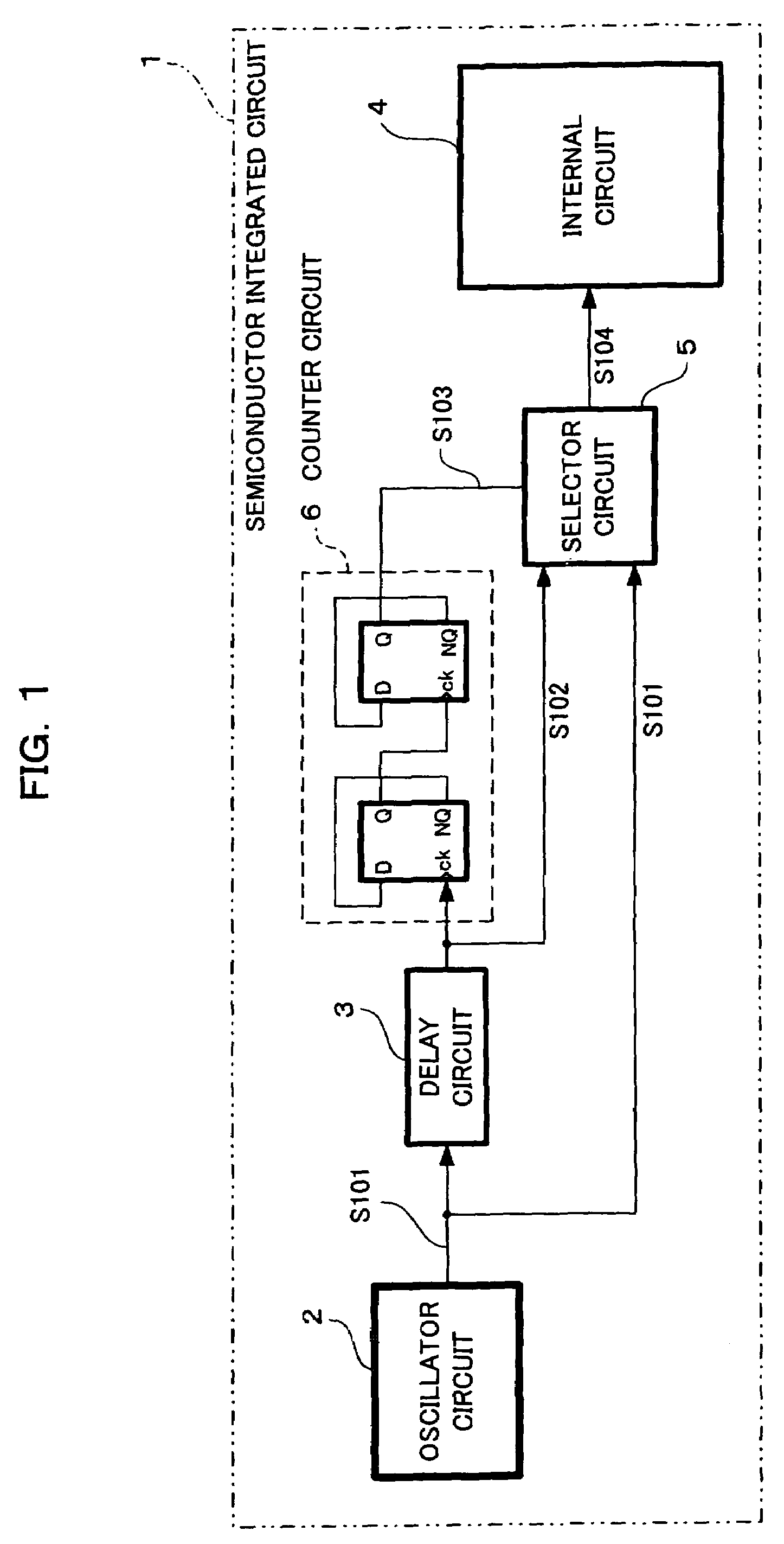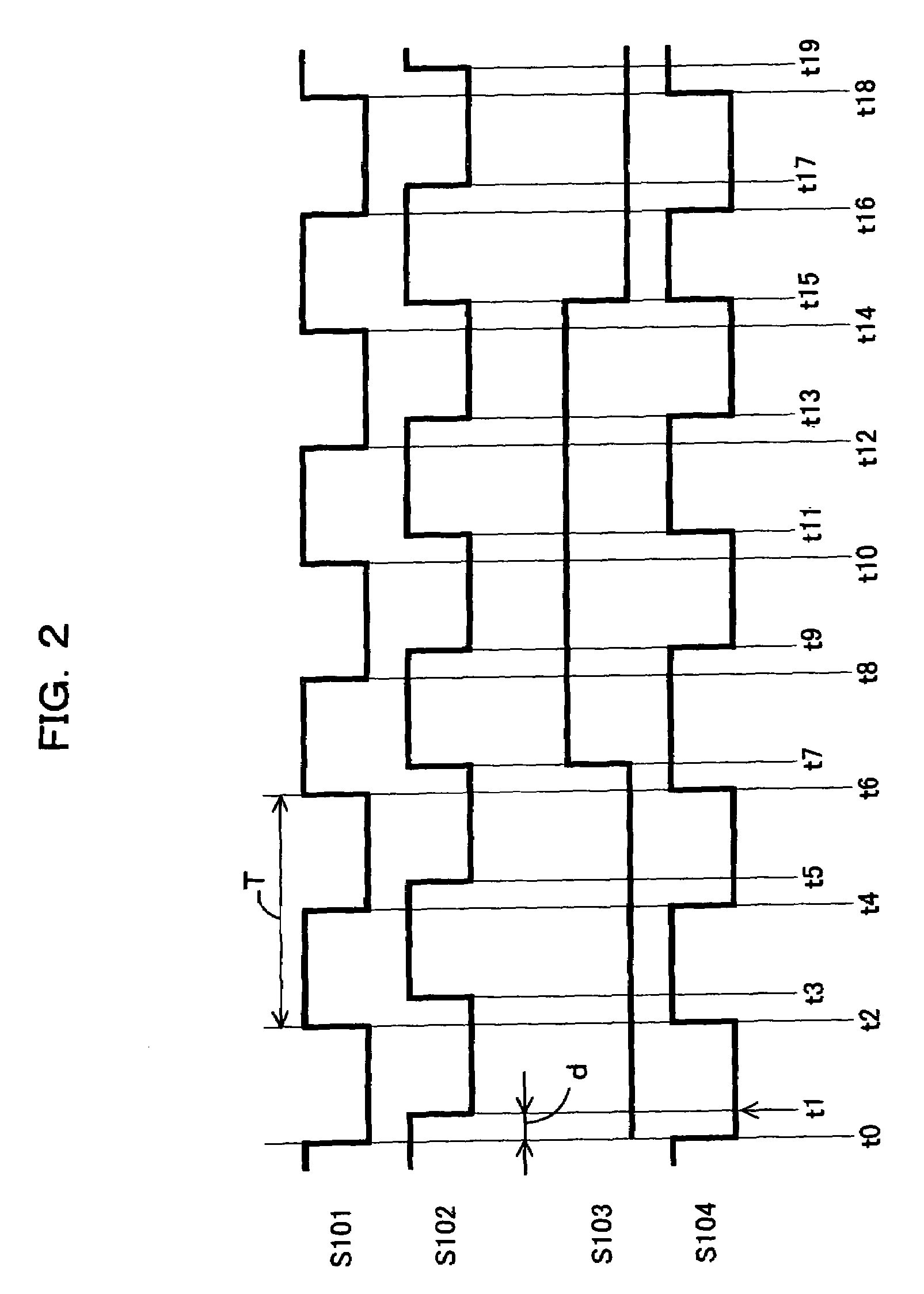Semiconductor equipment
a technology of semiconductor equipment and equipment, applied in the direction of generating/distributing signals, pulse techniques, instruments, etc., can solve the problems of electromagnetic interference and electromagnetic interference, and achieve the effect of easy to achieve semiconductor equipmen
- Summary
- Abstract
- Description
- Claims
- Application Information
AI Technical Summary
Benefits of technology
Problems solved by technology
Method used
Image
Examples
embodiment 1
[0028]FIGS. 1 to 4 show (Embodiment 1) of the present invention.
[0029]FIG. 1 shows semiconductor equipment of the present invention. FIG. 2 is a signal waveform chart of the semiconductor equipment. FIGS. 3 and 4 are current spectrum diagrams.
[0030]In semiconductor equipment 1 having an internal circuit 4 operating in synchronization with a system clock, a logic circuit constituted of a delay circuit 3, a counter circuit 6, and a selector circuit 5 is interposed between the clock input of the internal circuit 4 and an oscillator circuit 2 which is connected to an oscillator or a radiator and outputs a source clock S101. The source clock S101 has a frequency of f0 and a period of T.
[0031]The delay circuit 3 outputs a delay clock S102 which is obtained by delaying the source clock S101 from the oscillator circuit 2 by a specified time d.
[0032]The counter circuit 6 is a 2-stage counter circuit for counting the delay clock S102 outputted from the delay circuit 3. As shown in FIG. 2, an ...
embodiment 2
[0047]FIG. 5 shows (Embodiment 2) of the present invention.
[0048]FIG. 5 shows another example of the counter circuit 6 shown in FIG. 1. An oscillator circuit 2, a delay circuit 3, a selector circuit 5, and an internal circuit 4 of semiconductor equipment of (Embodiment 2) are similar to those of (Embodiment 1).
[0049]In FIG. 5, a counter circuit 6 is characterized in that only the least significant bit has an initial value of “1” and other bits have initial values of “0” in response to an initializing signal S129.
[0050]A flip-flop 29 is fed with an overflow signal outputted from the counter circuit 6 and uses a system clock S104 as a clock.
[0051]The following will discuss the operations of the semiconductor equipment configured thus according to (Embodiment 2).
[0052]A source clock S101 with a frequency of f0 and a period T generates a delay clock S102 delayed by a specified time by the delay circuit 3. In response to an output signal S123 of the counter circuit 6, the selector circui...
embodiment 3
[0058]FIGS. 6 and 8 show (Embodiment 3) of the present invention.
[0059]FIG. 6 shows another example of the delay circuit 3 shown in FIG. 1. An oscillator circuit 2, a counter circuit 6, a selector circuit 5, and an internal circuit 4 of semiconductor equipment of (Embodiment 3) are similar to those of (Embodiment 1). FIG. 8 is a signal waveform diagram.
[0060]Reference numerals 33a and 33b denote first and second delay circuits. A source clock S101 is inputted to the first delay circuit 33a where a delay value is a specified time d1. A delay clock S132a generated on the output of the first delay circuit 33a is outputted as a delay clock S132b through the second delay circuit 33b where a delay value is a specified time d2.
[0061]Reference numeral 34 denotes a delay clock selector circuit. The delay clocks S132a and S132b are inputted to the input of the delay clock selector circuit 34. One of the delay clocks S132a and S132b is selected in response to a selection signal S136 and is out...
PUM
 Login to View More
Login to View More Abstract
Description
Claims
Application Information
 Login to View More
Login to View More - R&D
- Intellectual Property
- Life Sciences
- Materials
- Tech Scout
- Unparalleled Data Quality
- Higher Quality Content
- 60% Fewer Hallucinations
Browse by: Latest US Patents, China's latest patents, Technical Efficacy Thesaurus, Application Domain, Technology Topic, Popular Technical Reports.
© 2025 PatSnap. All rights reserved.Legal|Privacy policy|Modern Slavery Act Transparency Statement|Sitemap|About US| Contact US: help@patsnap.com



